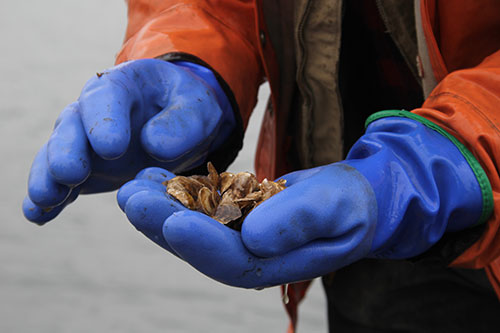
Laboratory and Field Experiments Looking at Sediment Buffering with CaCO3 to Enhance Recruitment of Mya arenaria
Project Description
The project aims to determine if sediment CaCO3 saturation state is a recruitment cue for settling marine bivalves employing Mya arenaria as a model species. Earlier work (on hard clams Mercenaria mercenaria) has shown sediment pH is correlated with numbers of settling bivalves, and there is an ‘active’ process of site selection where pH/saturation state appears to be a positive settlement cue.
Results and Accomplishments
Project personnel finished a field experiment in the Harraseeket River, where they compared buffered and non-buffered sediments to see if the settlement of natural populations of M. arenaria could be enhanced using the technique. A series of predator exclusion devices (Beal Boxes) were deployed with both buffered (experimental) and non-buffered (control) boxes. Boxes were sampled and mud from all boxes was sieved (1mm) and persevered in 70% EtOH. Samples were analyzed under a dissecting microscope and different species of fauna identified and enumerated. Although project personnel finished identifying and enumerating species within the 10 buffered experimental boxes, problems prevented the team from having control boxes for direct comparison. Project personnel will repeat the experiment in Summer 2018.
Summary of Data Being Collected
| Data | Type | Quantity | Location |
| M. arenaria growth rate | Experimental Samples | 16 samples | Saint Joseph’s College |
| M. arenaria growth rate | Field Samples | 10 Beal Boxes | Harraseeket River/SJC |

